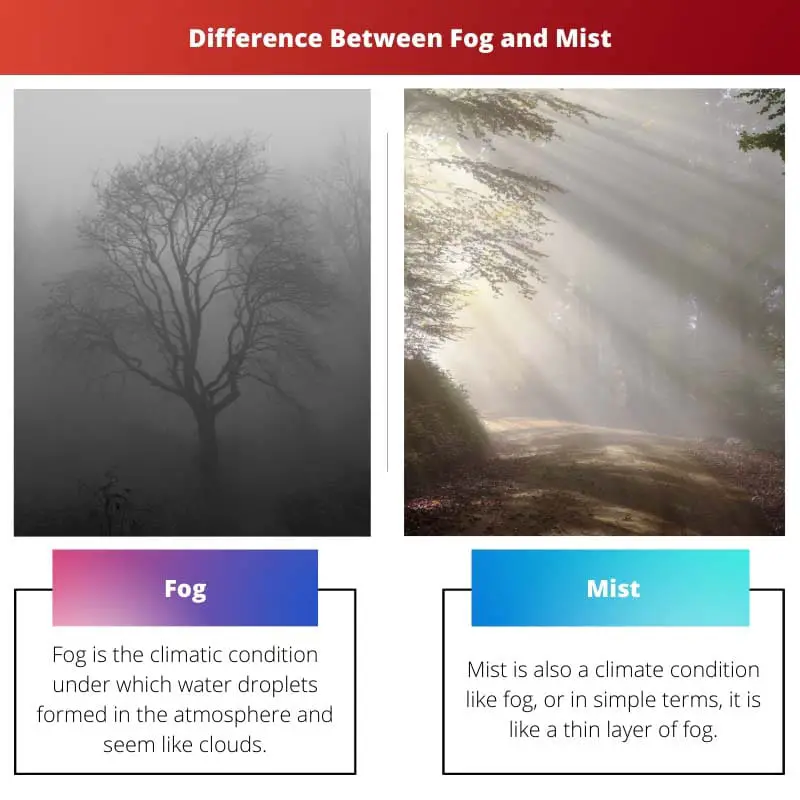In different climatic conditions, several different things can be noticed in the environment. People use these terms interchangeably, which is not correct as they have different names and they are not synonyms.
The confusion between both mist and fog is due to a lack of general knowledge and similarities between both of them. Following are some of the important differences, along with other information on fog and mist.
Key Takeaways
- Fog reduces visibility to less than 1 km, while mist limits visibility to between 1 km and 2 km.
- Fog forms when the temperature and dew point are close, while mist occurs when warm air meets cooler air.
- Fog persists longer than mist, which dissipates as the day progresses.
Fog vs Mist
The difference between Fog and Mist is that fog is higher in density and longevity, it is made up of a thick layer and can survive for hours, and it is the result of slow winds, it can be easily visible for a longer duration and has many types (as many processes lead to the formation of it, whereas Mist is a thin layer and is quite the opposite of fog in terms of density and longevity and it has not to type.

Fog is the climatic condition under which water droplets form in the atmosphere and seem like clouds. The water molecules are hung very close to the earth’s surface.
Mist is also a climate condition like fog, or in simple terms, it is like a thin layer of fog. It mostly formed due to sudden changes in climatic changes, especially the weather becomes cold.
Comparison Table
| Parameters of Comparison | Fog | Mist |
|---|---|---|
| Types | Has types | Don’t have types |
| Resilience | More | Less |
| Duration | Long | Short |
| Visibility | Less distance | More distance |
| Density | High | Low |
What is Fog?
Many factors lead to the formation of fog, and this is also the reason there are many types of fog:
- Upslope fog: it is the type of fog formed when air rises from mountain slopes.
- Freezing Fog: this fog is formed when the cool droplets touch or come in contact with the surface.
- Hail Fog: it is responsible for temperature change and is caused in areas where hale is present.
There are other types of fog as well, but these are the main types that can be seen or found easily or more commonly.
It is not visible clearly during fog, and therefore driving through this is considered dangerous as sometimes you cannot see the vehicle coming.
On Earth, Canada is the place that faces the most due to its weather and climatic conditions. There are certain machines used for the formation of artificial fog.

What is Mist?
Mist is a climatic condition that is confused with fog, and up to a certain extent, it is correct to say mist is nothing but a thin layer of fog. It is mainly formed when warm air comes in contact with the cold surface.
A large and strong wind can lead to the disappearance of mists in a few minutes. Hence, in a place where the wind is normally at a high and fast speed, there are low chances of forming mists.

Main Differences Between Fog and Mist
- It is mostly visible for up to 1 km of distance; only after that it starts disappearing, whereas mist can be seen for a longer distance than fog, it is easily visible for more than 1 km distance.
- Lastly, they are different when it comes to density. The density of fog is higher in comparison.

- https://ieeexplore.ieee.org/abstract/document/7163242/
- https://link.springer.com/article/10.1007/BF00123193